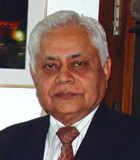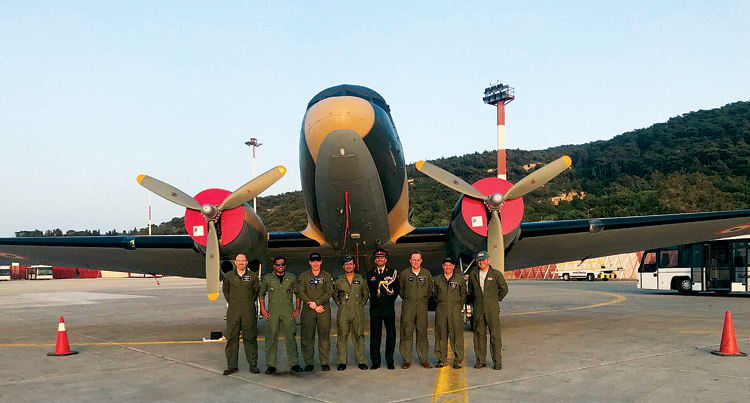INDIAN ARMED FORCES CHIEFS ON OUR RELENTLESS AND FOCUSED PUBLISHING EFFORTS

The insightful articles, inspiring narrations and analytical perspectives presented by the Editorial Team, establish an alluring connect with the reader. My compliments and best wishes to SP Guide Publications.

"Over the past 60 years, the growth of SP Guide Publications has mirrored the rising stature of Indian Navy. Its well-researched and informative magazines on Defence and Aerospace sector have served to shape an educated opinion of our military personnel, policy makers and the public alike. I wish SP's Publication team continued success, fair winds and following seas in all future endeavour!"

Since, its inception in 1964, SP Guide Publications has consistently demonstrated commitment to high-quality journalism in the aerospace and defence sectors, earning a well-deserved reputation as Asia's largest media house in this domain. I wish SP Guide Publications continued success in its pursuit of excellence.
Desire to Preserve History of the IAF
Inducted in 1946, the Dakota was an iconic platform and in the initial years of post-independence India, was the mainstay of the transport fleet of the IAF
 | By Air Marshal B.K. Pandey (Retd) Former Air Officer Commanding-in-Chief of Training Command, IAF |

A Dakota DC-3 which had been gifted three months ago to the Indian Air Force (IAF) by Rajeev Chandrasekhar, Member of Parliament (Rajya Sabha), was formally inducted into the IAF and joined the Vintage Squadron located at Air Force Station Hindan, on Friday May 4, 2018. The Dakota bearing tail number VP 905 and appropriately christened as ‘Parashurama’, was formally inducted into the IAF at a grand ceremony at Hindan where it was handed over by Air Commodore M.K. Chandrasekhar (Retd), father of Rajeev Chandrasekhar and a renowned veteran from the Dakota fleet of the IAF. The aircraft that was purchased and restored by Rajeev Chandrasekhar, was received by Air Marshal B.S. Dhanoa, Chief of the Air Staff.
Inducted in 1946, the Dakota was an iconic platform and in the initial years of post-independence India, was the mainstay of the transport fleet of the IAF and played a sterling role in its operational history. It was the first to land troops of the Indian Army at Srinagar in 1947 in response to Pakistani efforts to usurp control of the Kashmir Valley and provided logistic support to the Indian forces through the war in 1947-48. In Poonch, Dakotas were employed to drop bombs and this was followed by the first ever landing at a manually prepared strip just 600 yards long. The Dakota played a crucial role in preventing Poonch from falling into Pakistani hands. During the war in December 1971, Dakotas were a part of the fleet that dropped Indian paratroopers at Tangail in Bangla Desh. It was one the finest transport aircraft ever designed and was endowed with versatile operational capability.
When the Dakota fleet was retired from service, the last of this platform was sold off by 2010 as scrap. Driven by the motivation of preserving history, Rajeev Chandrasekhar initiated a move in 2011 to purchase a Dakota that was on sale in Ireland. His initial proposal to gift a Dakota aircraft to the IAF at his own cost, was rejected by the Minister of Defence, A.K. Antony, ostensibly on account of lack of a precedent. However, Manohar Parrikar, the Minister of Defence in the BJP Government, cleared the proposal subsequently with a pre-condition that the fully restored aircraft be handed over to the IAF in India.
Having embarked on the task, the challenges for Rajeev Chandrasekhar especially with regard to the restoration of the Dakota to make it airworthy, were formidable. One of the greatest challenges was to procure the required original spare parts, both for the airframe and the engines, as the original equipment manufacturer had ceased production of the Dakota over seven decades ago and hence was not in a position to provide any product support. Spare parts and the required engineering expertise had to be sought from private parties spread across the United Kingdom (UK) and Europe. Thus to get the aircraft back on the line and make it fit to fly safely several thousand miles across seven nations to reach India, was not only an expensive proposition, but was painstaking and demanded both patience and passion on the part of Rajeev Chandrasekhar. Another major hurdle would have been to obtain certification for the restored aircraft from the Civil Aviation Authority, the regulatory authority of the UK.
Apart from the overpowering desire on the part of Rajeev Chandrasekhar to preserve history, the effort and cost involved in gifting of a vintage Dakota aircraft to the IAF is a reflection of the respect for and high esteem that the family holds the IAF in. This gesture is not only be a matter of pride for those retired or currently serving in the IAF; but will continue to be a source of inspiration for future air warriors as well.





